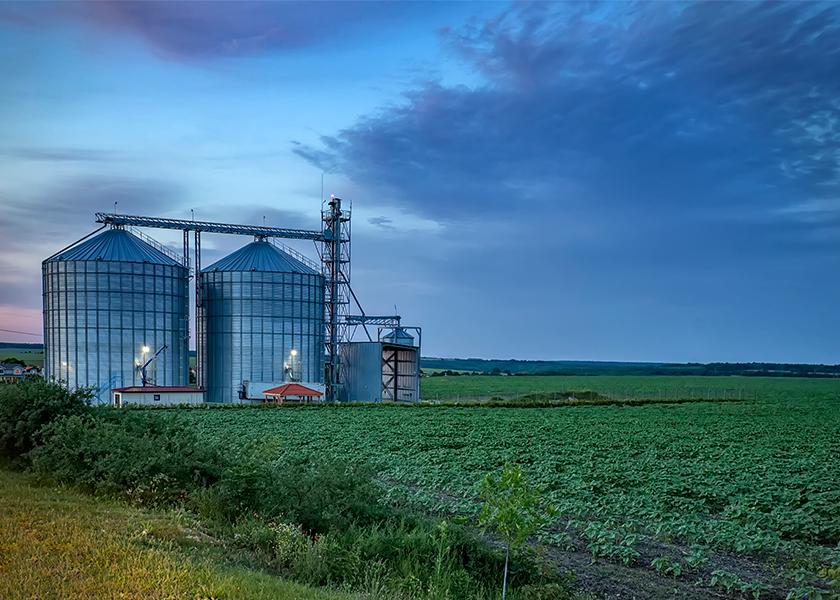Evening Report | January 3, 2023

Click here to view weekly export inspections charts and here for report details.
Check our advice monitor on ProFarmer.com for updates to our marketing plan.
Consultant keeps South American crop forecasts unchanged, but warns of more Argentine declines... South American crop consultant Dr. Michael Cordonnier kept his Argentine crop estimates at 43 MMT for soybeans and 46 MMT for corn “because there was just enough rain over the weekend to maybe stabilize crops at least temporarily.” But the forecast January and February is for below-average precipitation and if the forecast verifies, Cordonnier says his crop estimates “will probably move lower.”
Cordonnier kept his Brazilian crop estimates at 151 MMT for soybeans and 125 MMT for corn. He says soybeans in central and northern Brazil “are expected to do fine while the yields of the soybeans in far southern Brazil will depend on the rainfall during January.” Cordonnier has a neutral bias toward Brazil’s soybean crop and a neutral/lower bias for corn.
StoneX cut its Brazilian soybean crop estimate by 1.2 MMT to 153.8 MMT. The brokerage firm cut its Brazilian corn crop forecast by 1.6 MMT to 128.7 MMT.
Soy crush a little lower than expected... U.S. processors crushed 189.5 million bu. of soybeans in November, according to USDA, down 7.1 million bu. (3.6%) from October and 1.1 million bu. (0.6%) less than year-ago. Traders expected the November soybean crush to total 190 million bushels.
Soyoil stocks at the end of November totaled 2.108 billion lbs., up 14 million lbs. from October despite the smaller crush but 298 million lbs. less than year-ago.
Corn-for-ethanol use also slightly lower than expected... Corn-for-ethanol use totaled 447.4 million bu. in November, according to USDA, down 1.6 million bu. (0.4%) from October and 19.5 million bu. (4.2%) less than last year. Traders expected USDA to report corn-for-ethanol use of 448.7 million bushels. Total corn used for ethanol and other industrial purposes was 497.6 million bu., down 7.4 million bu. (1.5%) from October and 21.2 million bu. (4.1%) less than year-ago.
Dried distillers grains with solubles production totaled 1.778 million tons, up from 1.745 million tons in October but down from 1.997 million tons in November 2021.
OMB completes additional pandemic aid review... The Office of Management and Budget (OMB) on Dec. 28 completed its review of a final rule from USDA covering Pandemic Assistance Programs to pay farmers for eligible losses. The plans also make updates to regs for the Coronavirus Food Assistance Program (CFAP); Biomass Crop Assistance Program (BCAP); Emergency Conservation Program (ECP); Emergency Assistance for Livestock, Honeybees, and Farm-Raised Fish Program (ELAP); Livestock Forage Disaster Program (LFP); Livestock Indemnity Program (LIP); Noninsured Crop Disaster Assistance Program (NAP); and payment eligibility provisions. It is likely that after completion of this review by OMB, USDA will be announcing more actions (Phase 2) under the Emergency Relief Program (ERP) that have been delayed.
Farmer sentiment rebounds, but 2023 outlook is weaker... The Purdue University/CME Group Ag Economy Barometer closed out 2022 on a more positive note, rallying 24 points in December to a reading of 126, the highest for the year. U.S. farmers were more optimistic about both their current situation and expectations for the future. The Current Conditions Index jumped 37 points to a reading of 135, while the Future Expectations Index increased 18 points to a reading of 122.
The improvement in current sentiment was motivated by producers’ stronger perception of current financial conditions on their farms as the Farm Financial Performance Index climbed 18 points above the prior month’s reading to reach 109, which was the only time in 2022 that the index was above 100. The turnaround in the Financial Performance Index was driven by a sharp increase in the percentage of producers who expect better performance. The change in perception among producers regarding their farms’ financial situation could be attributable to producers taking time to estimate their farms’ 2022 income following the completion of the fall harvest. The improved assessment of farm financial conditions was consistent with USDA’s forecast for strong net farm income in 2022.
Despite the improvement in farmers’ perception of their financial situation, both the short-term and long-term farmland value indices continued to drift lower in December. The short-term index fell five points to 124 while the long-term index declined from 144 to 140. Although both farmland value indices remain in positive territory, when examined over the course of the last year it’s clear that sentiment among producers about farmland values has shifted.
Looking to the year ahead, the December survey asked producers to compare their expectations for their farm’s financial performance in 2023 to that of 2022. Producers indicated they expect financial performance in 2023 to fall below this year. Responses to the question about 2023 provide a financial performance index value that is 18 points lower than for responses from the question asking producers to compare 2022 to 2021. Rising costs and narrowing margins are key reasons for the lower index in 2023. Concerns about costs continue to be top of mind for producers’ when asked to look ahead to the upcoming year. For example, nearly half (47%) of the crop producers in this month’s survey said they expect farmland cash rental rates in 2023 to rise above the prior year. And in a related question, 45% of producers cited higher input costs as their top concern in 2023 followed by rising interest rates (22% of respondents) and lower crop or livestock prices (13% of respondents).
IMF head warns 2023 could be a rough year... For much of the global economy, 2023 is going to be a tough year as the main engines of global growth - the United States, Europe and China - all experience weakening activity, the head of the International Monetary Fund (IMF) warned. She said the new year is going to be “tougher than the year we leave behind,” IMF Managing Director Kristalina Georgieva said on the CBS Sunday morning news program “Face the Nation.”
“For the first time in 40 years, China’s growth in 2022 is likely to be at or below global growth,” Georgieva said. Moreover, a “bushfire” of expected Covid infections there in the months ahead are likely to further hit its economy this year and drag on both regional and global growth, said Georgieva.
Meanwhile, Georgieva said, the U.S. economy is standing apart and may avoid the outright contraction that is likely to afflict as much as a third of the world's economies. The “U.S. is most resilient,” she said, and it “may avoid recession. We see the labor market remaining quite strong. This is... a mixed blessing because if the labor market is very strong, the Fed may have to keep interest rates tighter for longer to bring inflation down.”
China’s manufacturing PMI readings drop... China’s official manufacturing purchasing managers index (PMI) fell to 47.0 in December, the lowest level since February 2020. The Caixin China General Manufacturing PMI fell to 49.0 in December 2022, the lowest since September, as a spike in Covid cases disrupted production. The reading pointed to the fifth straight monthly decline in factory activity, with output, new orders and export sales all falling further. Also, buying activity shrank the most since April, while employment dropped for the ninth consecutive month without signs of a significant rebound, and backlogs of work fell for the third time in four months. Delivery times lengthened for the sixth month running with a solid rate of deterioration. On inflation, input prices rose slightly, due to a rise in some materials, notably metals. However, firms continued to lower their selling prices, in efforts to boost competitiveness and gain new business.
China to boost spending in 2023 economic revival drive... China’s economic planner aims to help boost domestic consumption and woo more foreign investors this year as it seeks to revive the country’s Covid-hit economy. In a People’s Daily interview published on Sunday, Zhao Chenxin, deputy chairman of the National Development and Reform Commission (NDRC), said authorities would align fiscal, monetary, industrial, technology and social policies to promote growth. The government would also give support to previously tightly regulated sectors such as property and internet companies as part of a wider push to increase consumer spending. Zhao admitted the foundations for an economic recovery were not solid and the pandemic continued to affect economic operations. But he said his agency was determined to put consumer spending center stage. “We must increase the revenue of urban and rural households. Particular support should be given to low and medium-income families who are more willing to spend but affected more by the pandemic,” he said.
How Russia’s war on Ukraine is worsening global starvation... That’s the title of an article in today’s New York Times. Moscow is blocking most shipments from Ukraine, one of the world’s largest wheat producers, and its attacks on the country’s energy grid also disrupt the flow of food, the item details. “Hulking ships carrying Ukrainian wheat and other grains are backed up along the Bosporus here in Istanbul as they await inspections before moving on to ports around the world. The number of ships sailing through this narrow strait, which connects Black Sea ports to wider waters, plummeted when Russia invaded Ukraine 10 months ago and imposed a naval blockade. Under diplomatic pressure, Moscow has begun allowing some vessels to pass, but it continues to restrict most shipments from Ukraine, which together with Russia once exported a quarter of the world’s wheat.”
EV production driving factory-building boom... The automotive sector’s shift to electric vehicles (EVs) is helping drive one of the biggest factory-building booms in the U.S. in years. About $33 billion in new auto-factory investment was pledged in the country across the first 11 months of 2022, the Wall Street Journal (WSJ) reports, adding to the $37 billion in new investments announced in 2021. The annual figure from the Center for Automotive Research shows a more than eightfold increase from two decades ago. The WSJ article says, “That’s a dramatic sign of how rapidly new supply chains are being established, and how new electric-vehicle assembly and battery plants are also changing the map for auto production in the U.S. About two-thirds of the new auto investment revealed over the past two years is going to sites in the U.S. South, the data shows, tilting activity away from the Great Lakes region and creating a new eco-system of sector suppliers.”






